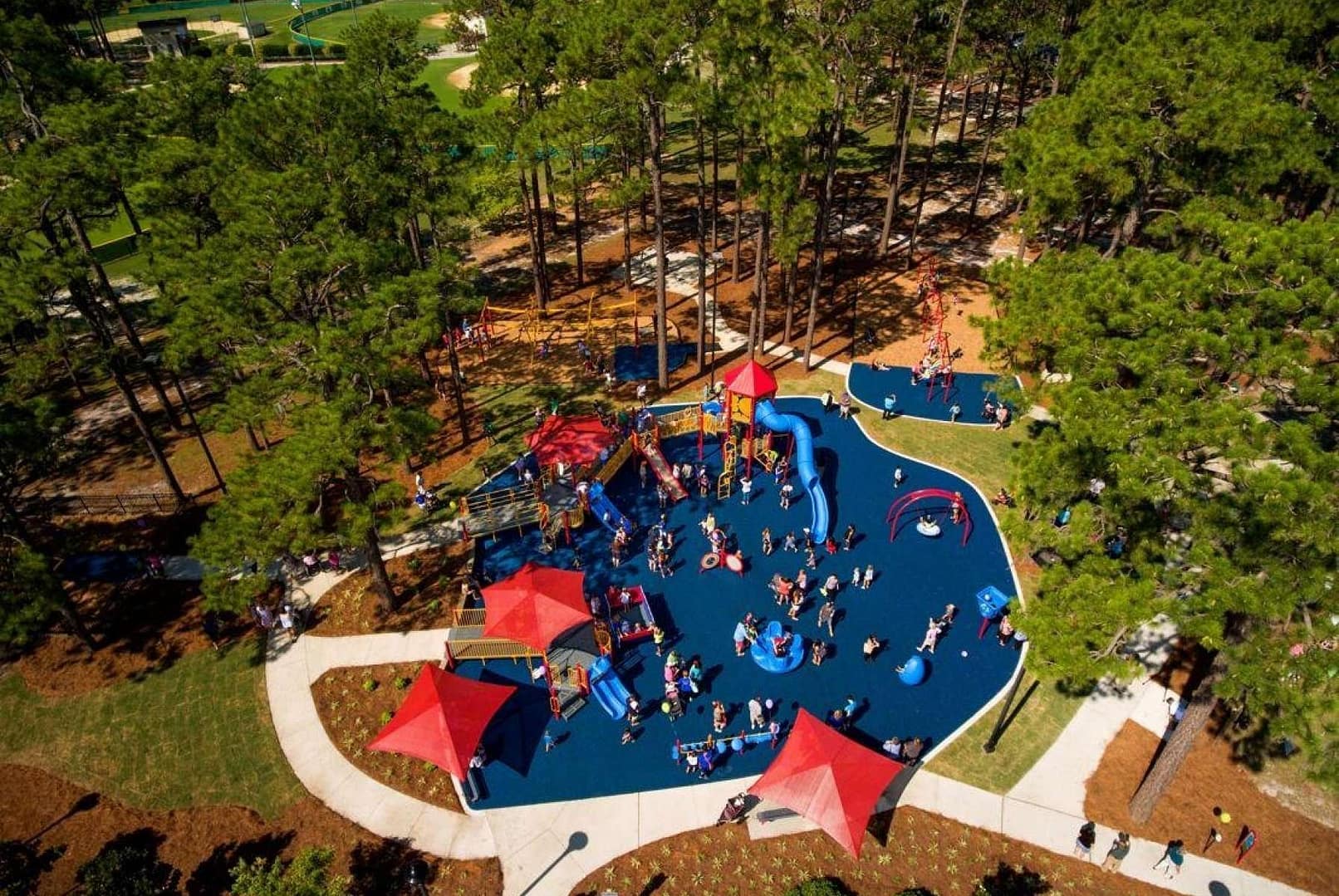Communities that rally around the health and well-being of their children are inspirational. Many are recognizing the diverse needs of the children and families in their communities and taking innovative approaches to nurture appreciation, align values, and demonstrate respect. Innovative, inclusively designed play environments are a fundamental statement about a community’s social values and their belief that every child deserves the right to play. Inclusive play offers a multitude of benefits that positively impacts community outcomes and supports diversity, fun, health and wellness, learning, friendships, social equity, physical activity, community engagement, self-determination, usability, awareness, and respect.
Maximizing Usage
The best measure of an inclusive play destination’s success is how the community actually uses it. A study conducted at Kids Together Playground, Cary, North Carolina, that contained several play areas found that two-fifths of the total park use occurred on the universally designed play structure. It also received the highest attractiveness score, whereas the playground structure that met minimum accessibility standards scored considerably lower. Reasoning for this outcome included that the universally designed structure contained more behavior settings than other zones, and the accessible route of travel to the structure from the primary pathway connected two ramped entryways. The universally designed playground was found to have greater potential to attract a broader range of users of various abilities and skill levels. The design created easy circulation as users moved around the space, and it offered social gathering and vantage points for caregivers to supervise their children (Moore & Cosco, 2007).
Planning & Stakeholder Engagement
Inclusive play and recreation bring communities together in a variety of meaningful ways, while building social capital through the many community engagement opportunities that occur along the way. Community engagement is one of the most important aspects of your inclusive play project to ensure you’ve addressed local priorities, created awareness, and enlisted community partners, volunteers, and potential funders that share your mission, values, and goals. By maximizing the very process itself as a pivotal opportunity to bring stakeholders together, community based initiatives can refine the planning process so that it is user-focused, creates robust funding initiatives that embrace giving, designs unique play spaces that meet community goals, celebrates the community members’ talents, and develops a comprehensive plan for using and sustaining the space. Effective engagement helps ensure a wise investment and leaves a lasting legacy for years to come.
Inclusive Play Programming
Thoughtful attention should be given in the early planning phases about how the inclusive play space will be utilized after the project installation is complete to continue the project momentum, promote meaningful use, and impact community outcomes. The way the community engages with the space will maximize its overall value. Design has a critical role in creating spaces where rich and diverse play experiences can happen. For communities to fully take advantage of the many benefits inclusive play spaces have to offer, special events, activities, and programming should occur in and around them.
An in-depth review of the literature indicates that social intervention strategies positively impact the inclusion of children with disabilities in play activities with peers and is cited as a key strategy to promote social inclusion. Children with and without disabilities need strategies that help them understand how to effectively play together. Research shows that disability awareness intervention has significant and positive effects on children’s understanding of and attitudes toward people with disabilities (Cooper, 2003). Educators and programmers that use strategies to promote disability awareness provide children with the tools to ask questions, get accurate information, explore their feelings, and learn how to positively interact with their peers (Wolery, 1994).
PlayCore’s inclusive play program, 2 Play Together®: To Foster Friendships Through Inclusive Play, was developed in partnership with Lekotek, a leading source on play for children with special needs. This valuable resource strives to make a positive difference in inclusive playground play by creating communities that care through character education. 2 Play Together offers playground activities and tips for educators and programmers to create awareness, break down barriers, and foster friendships. Teaching children about how they can successfully play together takes inclusion to the next level and can be critical for creating meaningful play experiences for children of all abilities.
Celebrating Model Inclusive Play Initiatives
Join us in celebrating the inspirational case examples of some of our National Demonstration Sites that have implemented the 7 Principles of Inclusive Playground Design®. These national models are stellar examples of how visionary leaders and community champions have thoughtfully implemented best practices during the planning, implementation, programming, and sustainability phases of their unique play destination. These inspirational inclusive play projects and initiatives have brought hope, joy, and laughter to countless children, families, and community members. We commend them for their leadership and their commitment to improving the quality of life among citizens.
Through thoughtful design, every play environment can offer more meaningful inclusive experiences for the diverse members of the community. From large destinations to urban pocket parks, from public to private schools, from early childhood settings to senior centers, from hospitality to rehabilitation hospitals, from small to large budgets, every play and recreation setting can help uniquely tell a community’s story and provide the critical benefits of play.
This blog post was originally published in https://www.playcore.com/news/engaging-whole-communities

